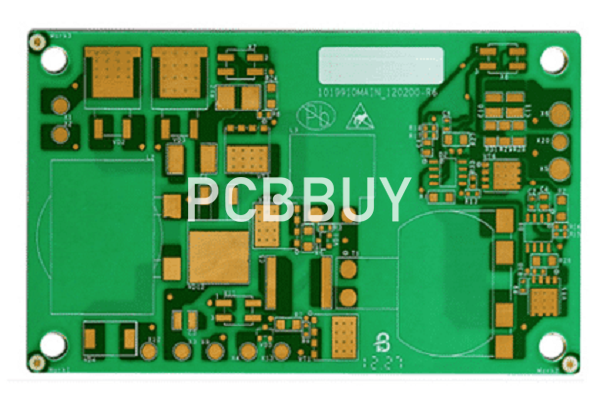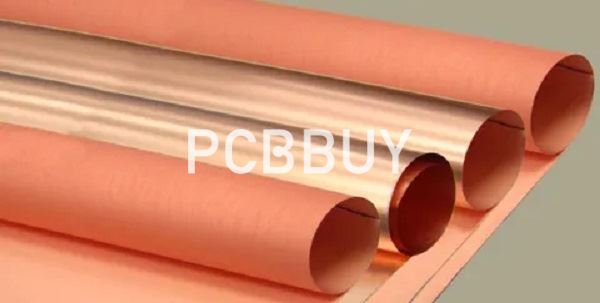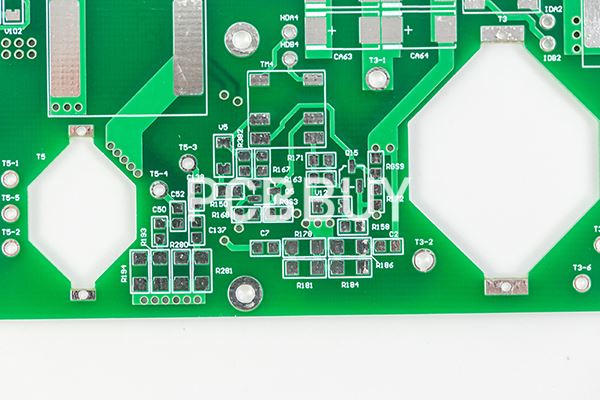Copper clad laminate
By:PCBBUY 07/26/2021 17:16

Substrates are very important to PCB manufacturing and divided into 2 types: organic substrates and inorganic substrates. Copper Clad Laminate, abbreviated to CCL, is a type of base material of PCBs. With glass fiber or wood pulp paper as reinforcing material, a copper clad board is a type of product through lamination with copper clad on either one side or both sides of reinforcing material after being soaked in resin.
In this passage, we will tell you details about copper clad laminate in PCB. Please check and read the content we prepare for more professional knowledge.

What are the classifications of copper clad laminate?
According to different classification standards, CCLs can be classified into various categories:
• Based on CCL mechanical rigidity, we have rigid CCL (FR-4, CEM-1, etc.) and flex CCL. Rigid PCBs depend on rigid CCLs while flex PCBs are on flex CCLs (flex-rigid PCBs are on both rigid CCLs and flex CCLs).
• Based on insulation material and structures, we have organic resin CCL (FR-4, CEM-3, etc.), metal-base CCL, ceramic-base CCL etc.
• Based on CCL thickness, we have standard thickness CCL and thin CCL. The former one requires at least 0.5mm thickness while the latter can be thinner than 0.5mm. Copper foil thickness is excluded from CCL thickness.
• Based on reinforcing material types, we have glass fiber cloth base CCL (FR-4, FR-5), paper base CCL (XPC), compound CCL (CEM-1, CEM-3).
• Based on applied insulation resin, we have epoxy resin CCL (FR-4, CEM-3) and Phenolic CCL (FR-1, XPC).
What are the essential factors of copper clad laminate?
CCLs only perform well when catering to performance requirements in the following aspects:
• Appearance. Issues may be caused on copper foil due to unexpected elements in manufacturing process such as dent, scratch, resin point, wrinkle, pinhole, bubble etc. All those problems will definitely lead to low performance of CCL and then PCB. Therefore, an excellent CCL should be flat and smooth in appearance.
• Size. Since CCLs are base material of PCB boards, they have to conform to size requirements corresponding to PCBs. Parameters concerning the size of CCLs include length, width, diagonal deviation and warpage, each of which has to meet specific requirement.
• Electric performance. This is an essential mission for a PCB so any aspect affecting its electric performance has to be carefully designed including dielectric constant (Dk), dielectric loss tangent (Df), volume resistance, surface resistance, insulation resistance, arc resistance, dielectric breakdown voltage, electric strength, Comparative Tracking Index (CTI) etc.
• Physical performance. Parameters concerning physical performance of a CCL include dimensional stability, peel strength (PS), bending strength, heat resistance (including thermal stress, Td, T260, T288, T300), punching quality etc.

• Chemical performance. Chemical performance of a CCL has to meet the requirements of flammability, chemical reagents resistance, Tg, Z-axis coefficient of thermal expansion (Z-CTE), dimensional stability etc.
• Environmental performance. It has to cater to the requirements in terms of water absorption etc.
CCL quality judgment should be carried out by PCB Fab Houses. Take PCBCart for example, it applies IPC-4101C as a manufacturing standard and uses IPC-TM-650 for CCL testing. Accordingly, such measures lead CCLs to be qualified substrate of PCBs.
What are the materials of copper clad laminate?
Copper Foil
Copper foil is a cathodic electrolytic material deposited on a thin, continuous layer of metal foil on the base of the circuit board. It is easily bonded to an insulating layer, accepting a printed protective layer, and corroded to form a circuit pattern.
Prepreg:
A prepreg (from pre-impregnated) is fibreglass impregnated with resin. The resin is pre-dried, but not hardened, so that when it is heated, it flows, sticks, and is completely immersed. Prepregs are thus fibreglass strengthened by an adhesive layer (similar to FR4 material). The name of each prepregs derives from the type of fibreglass used.
The prepreg types of different suppliers vary in thickness; in addition there are the versions "SR" Standard Resin, "MR" Medium Resin "and" HR "High Resin, depending on the resin content. The best possible material is used depending on the desired final thickness, layer structure or impedance. The mentioned thicknesses are thus to be considered only as examples.

What is the trend of copper clad laminate?
In order to cater to the regulations of RoHS (Restriction of Hazardous Substances), higher requirements are brought on CCLs in terms of heat resistance and reliability. Modifications are implemented from the following two aspects:
• Halogen-free CCL. It refers to CCLs whose content of chlorine (Cl) and bromine (Br) is controlled within 900ppm while their overall content is no more than 1500ppm. Performance comparison between halogen-free CCLs and ordinary FR-4 CCLs is summarized into the following table.
• Lead-free CCL. It refers to copper clad PCBs whose surface mounting is carried out without the application of lead-free solder. The main resin of lead-free CCLs is brominated epoxy resin. According to the regulations of RoHS, six substances such as PBB and PBDE are no longer used in CCLs. Compared with DICY curing system (with dicyandiamide as curing agent) applied in ordinary FR-4 CCLs, lead-free CCLs take advantage of PN curing system (with Phenol-formaldehyde resin as curing agent).
Industry Category











